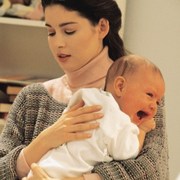A blister is an area of the skin where the outer layer (epidermis) separates from the next layer (dermis) and a small pocket of fluid develops within the upper layers of the skin. The fluid (serum) serves as a cushion that protects the tissue guarding it against further damage until it heals. Other bodily fluids may also form within the bubble, such as pus if it becomes infected. Blood may also form if the blister is a result of sub-dermal bleeding. In most cases, the fluid within the bubble is slow reabsorbed by the body as new skin grows under it. The skin on top then dries and sheds off. On average, this process takes around three to seven days.
A blister is typically caused by forceful rubbing (friction), burning, freezing, chemical exposure or infection. For example, foot blisters may develop due to wearing tight and uncomfortable footwear. Blisters may also form as a reaction of the skin to a chemical irritant. Blisters may also arise due to burns, even sunburn. Frostbite may also trigger blisters (which start to develop when the skin is re-warmed).
Blisters arising from skin irritation are easily prevented. If possible, minimize friction and apply talcum powder or petroleum jelly on blister-prone areas. Wear the appropriate socks, footwear and other protective gear if needed. Blisters are more likely to develop on moist and warm areas. So keep your hands and feet dry.
(TIP: purchase shoes at the end of the day since this is when your feet are tired and swell a little. By buying shoes during this time, you will be able to choose the size that would accommodate your feet when they are at their biggest.)
If you have a blister, focus on keeping it from getting bigger and minimize infection. Signs of infection are pus, warm and red skin around the affected area and the formation of thin red streaks that lead away from the blister. You can leave tiny, painless unbroken blisters alone to heal, because the skin covering the fluid is the best protection that a blister has against infection.
However, if your blisters are large and painful, you should do something about it. Here are the steps on how to drain large blisters:
1. Sterilize a needle by holding it over a flame until it is red hot and rinse it in alcohol.
2. Wash the affected area thoroughly. Using the sterilized needle, make a small hole and gently drain the blister of the fluid.
3. Apply some antibiotic ointment with bacitracin and polymyxin B onto the area in order to minimize the risk of infection. (Note ointments containing neomycin may cause allergic reactions.)
4. If the fluid that comes out of the blister is milky white, yellowish, or greenish, then that is a sign that your blister is infected. Other signs of infection include warm and red skin and the formation of red streaks around the blister. If you experience these, see a doctor immediately and he/she will recommend medications. Do not remove the flap of skin over the blister. This will serve as a protection for the growing skin underneath it.
Sources:
http://en.wikipedia.org/wiki/Blister
www.treatblisters.com
www.webmd.com
MC Ortega is the former publicist for the late Walter Payton and Coca-Cola. Ortega is a senior communications and messaging executive specializing in media relations, social media, program development and crisis communications. Also, Ortega is an avid traveler and international shopper. Ortega resides with her partner, Craig, dog, Fionne and extensive shoe collection. Ortega also enjoys jewelry design/production and flamenco dancing.




Add a CommentComments
There are no comments yet. Be the first one and get the conversation started!